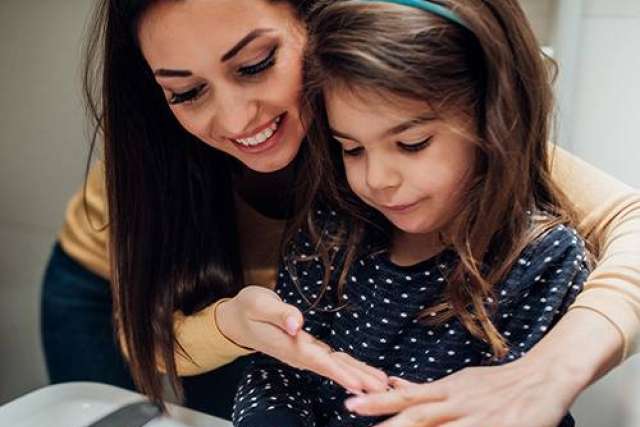1.Keep it real
- Have a conversation-stay authentic, truthful and give real information in a developmentally appropriate way.
- Do not use big words. Do not complicate.
Example: The virus called COVID-19 is making people sick. Some people can get very sick. Since it is contagious, meaning it can pass from one person to another, we need to separate ourselves from other people to protect others and ourselves. Wash your hands and try not to touch your face or put things in your mouth.
2. Reassure, reassure, reassure
- We are going to be ok! It’s really important to offer a lot of reassurance.
- Acknowledge the chaos and reassure that it will pass.
- These changes are temporary.
- There are many adults working hard to keep us safe. We, as a country and community, are going to come together to take care of each other.
3. Model calmness
- You create the environment children live in.
- Kids pick up our energy. “More is caught by kids than taught to kids.” They are always watching our body language, our energy and us.
- If we are calm, it will instill calmness in them.
4. Focus on the good
- Be a real optimist; Even though this pandemic is happening, what are the good things we can find or wrap our minds around?
- Look for the helpers, the good people in the world.
- Focus on how being together is precious time spent.
5. Be interested in your kids
- Ask them what they know. Do not try to guess or assume.
- What are their questions?
- What are their fears?
- Listen. It is ok to not know or have answers. It’s listening that counts.
6. Allow children to be involved
- Helping kids take effective action and contribute as it gives them a sense of purpose.
- Let them help. Give them a job.
Examples: Find chores they can help with, make art gifts for family/friends and ask them to check in with family via FaceTime or other communication methods.
7. Continually check in
- Conversations should be ongoing.
- Provide opportunities to check-in
- Give children updates, keep them informed.
8. Comfort of routine
- Make a plan.
- Create and continue the structure and routine that works for you.
- Make a family schedule, a new normal.
9. Monitor media
- Watch what they watch.
- Be mindful of having too much news that can be scary.
- Watch things that are happy, fun, light, joyful, comforting and educational.
10. Engage in the wonder of life
- Make time to create, play, read, sing, dance, explore and be in nature whenever you can.
Despite the uncertainty, try to find and create joy in hopes that our children will remember this time--not as a scarring, scary time--but as a time we persevered. You create the world your child lives in.



